What Is Miso Paste and How Do You Use It?
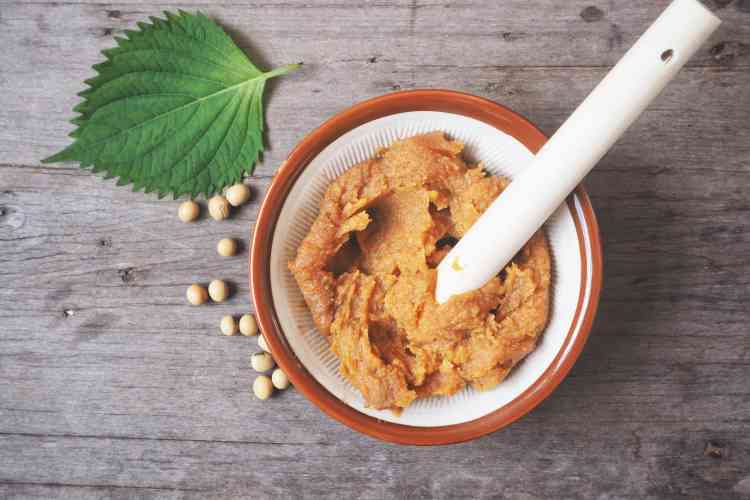
When learning about Japanese cuisine, miso paste is probably one of the first ingredients you’ll encounter. Used in a wide range of soups, sauces and stir-fries, miso holds an important role in the history of Japanese foods and brings that authentic umami flavor that is so iconic to many Japanese dishes.
But if you’ve ever sipped on miso soup, searched for Japanese recipes or wandered down the aisles of an Asian supermarket, you may have paused to wonder, what is miso paste? What is it made from? And how should you use it? Here’s everything you need to know about this fascinating, versatile and surprisingly healthy food.
Jump to Section
- What Is Miso Paste?
- What Does Miso Paste Taste Like?
- How To Store Miso Paste
- How Long Does Miso Paste Last?
- How To Use Miso Paste
- Is Miso Paste Healthy?
- Is Miso Paste Gluten-Free?
- Is Miso Paste Vegan?
- Where To Buy Miso Paste
What Is Miso Paste?
To put it simply, miso paste is a fermented soybean product that is used very frequently in Japanese cuisine. The paste has a spreadable, mixable and somewhat gritty consistency that could be compared to hummus or raw cookie dough. While miso paste is edible on its own, it is most often used to make miso soup, ramen broth, dressings, glazes or marinades.
Shiro miso and aka miso are two of the most common types of miso paste. They are often referred to as white miso and red miso, respectively. However, there are actually over 1,000 specific varieties of miso paste, offering plenty to explore beyond the commonly known red and white varieties. Some other types of miso paste include hatcho miso, mame miso, mugi miso, genmai miso and shinshu miso.
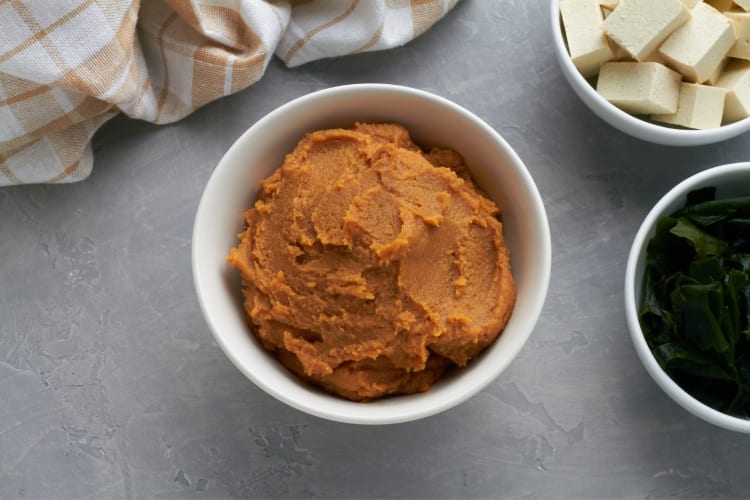
What Is Miso Paste Made Of?
Now that you understand what miso paste is, you may be wondering: What is in miso paste? It can be hard to tell what is in miso paste just by looking at it. While individual varieties may vary, the basic ingredients for miso paste include soybeans, salt and koji (Aspergillus oryzae). The latter ingredient is a type of mold fungus that can be cultivated on a wide range of grains, such as white rice, brown rice or barley.
To make miso paste, koji (which is interestingly Japan's National Fungus), is mixed with mashed soybeans and salt and left to ferment for months or even years. As the enzymes in the koji break down the soybean matter, amino acids are produced, and the paste begins to develop a rich umami flavor.
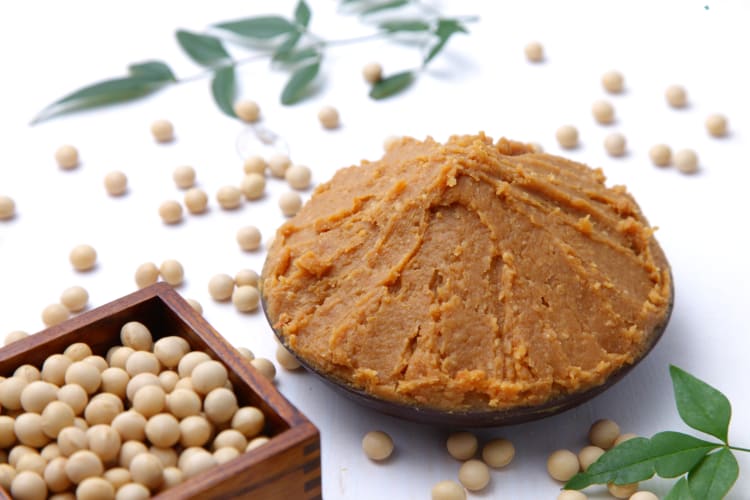
What Is White Miso Paste?
White miso paste, also known as Shiro miso paste, is made using koji cultivated from rice. White miso also uses a lower ratio of boiled, skinless soybeans to koji and is fermented for a relatively short period, usually less than one year. This gives white miso paste a sweet, mild flavor and off-white to yellowish-beige color. For those who are new to the world of miso, white miso can be a great place to begin for its mellow flavor and versatile culinary applications.
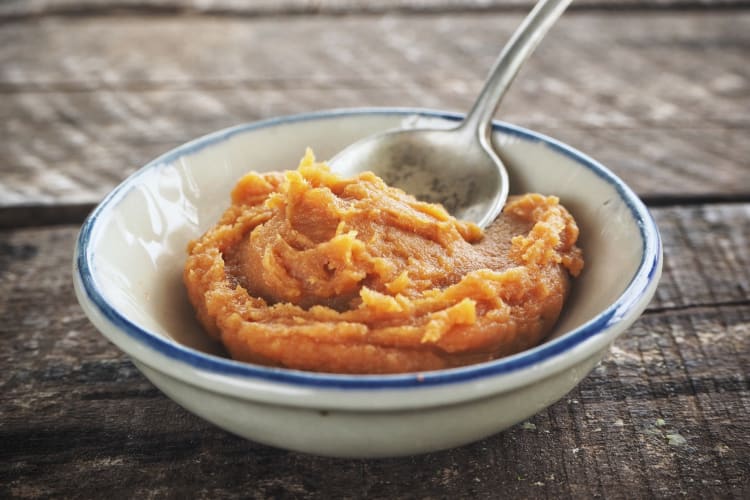
Is Soybean Paste the Same as Miso Paste?
Miso paste is not the same thing as soybean paste. Soybean paste, or doenjang as it’s called in Korea, isn’t fermented with grain-cultivated koji. Instead, doenjang is exposed to air during its fermentation process, allowing natural microbes to process the soybeans and salt. Both foods have a rich, salty and umami flavor profile, but doenjang has a stronger flavor and thicker, chunkier texture. In a pinch, doenjang can be used as a substitute for miso but should be used in much smaller quantities.
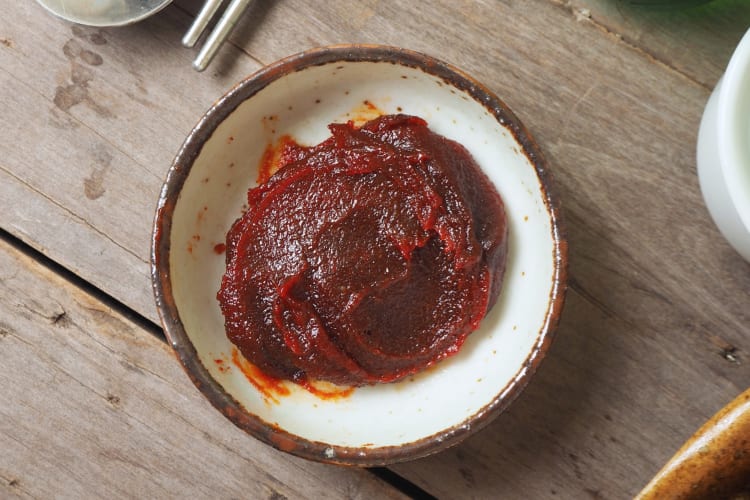
What Does Miso Paste Taste Like?
Different varieties of miso will have different flavor profiles, but all of them generally lend a salty, earthy and savory palate. Miso paste is like the epitome of umami, the nearly indescribable rich flavor category that is commonly found in broths and mushrooms. Some other condiments that compare to miso paste’s flavor include soy sauce, fish sauce or Worcestershire sauce, although it’s important to remember that miso is unique from all of these.
Some people may also pick up on a certain “funky” note in miso paste due to the koji, similar to that found in bleu cheese or truffles. In general, darker-colored miso will have a stronger and saltier flavor than lighter miso. This is because they have been allowed to age and ferment for longer. Some recipes will call for a specific type of miso, while others will leave the decision up to you, allowing you to reach for the miso paste that best suits your flavor preferences.
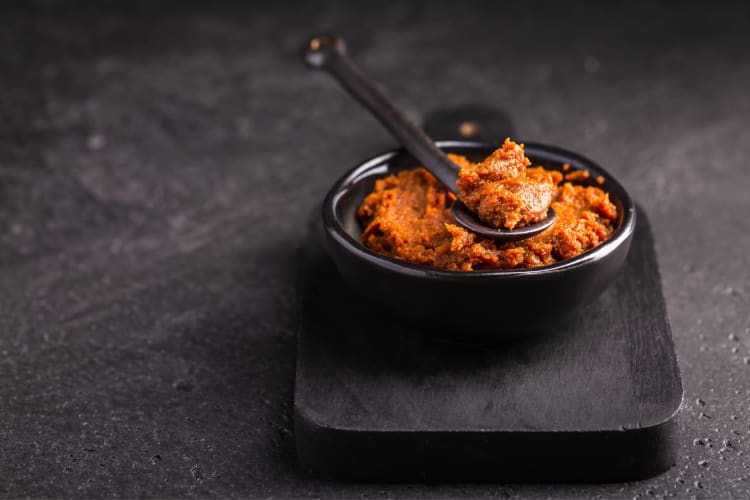
How To Store Miso Paste
Miso paste should always be stored in an airtight container to preserve its freshness and flavor. The best place to store miso paste is somewhere cool and dark, away from direct sunlight. This makes the fridge an ideal place to store miso, but it can also last in a kitchen cabinet or the pantry as long as conditions are right. As air interacts with the surface of the miso paste, it will continue to oxidize and ferment, changing its flavor.
To slow down the oxidation process, smooth a piece of parchment paper or plastic wrap over the surface of your miso paste before closing with a lid and storing it in the fridge. When scooping out your miso paste, always use clean and dry utensils to avoid mixing water or bacteria into the paste.
Does Miso Paste Need To Be Refrigerated?
Because miso paste is fermented and contains a high amount of salt, it doesn’t always need to be refrigerated to stay good after opening. However, refrigerating your miso paste is still a good idea in many cases because it can help the flavor and texture maintain its optimum quality.
Cheaper, more grocery-store-accessible miso pastes also tend to be more prone to mold growth and spoilage, so refrigerating is wise to keep the miso paste fresh. The best storage temperature for miso paste is at or below 68 degrees Fahrenheit. If your home normally stays very cool, you don’t need to refrigerate the miso paste, but if you prefer your home to be above 68 degrees, then storing miso in the fridge is a good idea.
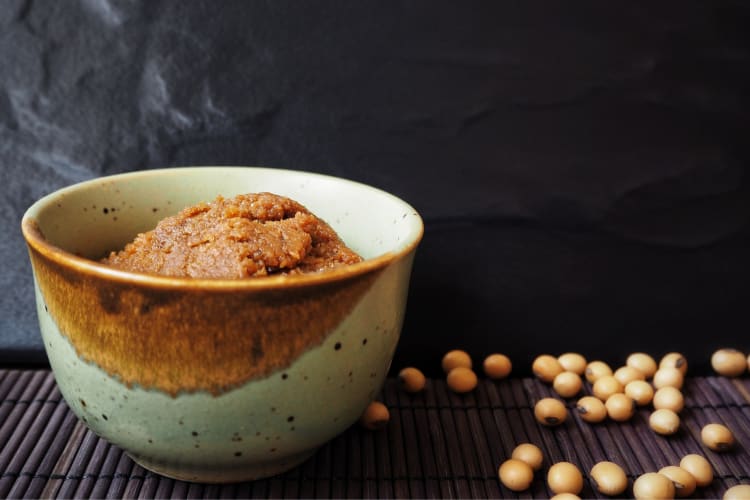
Can You Freeze Miso Paste?
Miso paste can be stored in the freezer to prolong its shelf life. Miso paste contains very little water content, so unless your freezer is extremely cold, the paste itself will probably not freeze solid. This means that the texture and flavor will stay very much the same, so it’s easy to use the miso directly from the freezer without thawing.
If you’re going to store miso in the freezer, you may want to adjust your temperature setting for other reasons. Miso paste is considered a “living” food due to the probiotics it contains, so keeping the freezer above 25 degrees Fahrenheit (-5 degrees Celsius) will ensure that the miso retains most of its health benefits too.
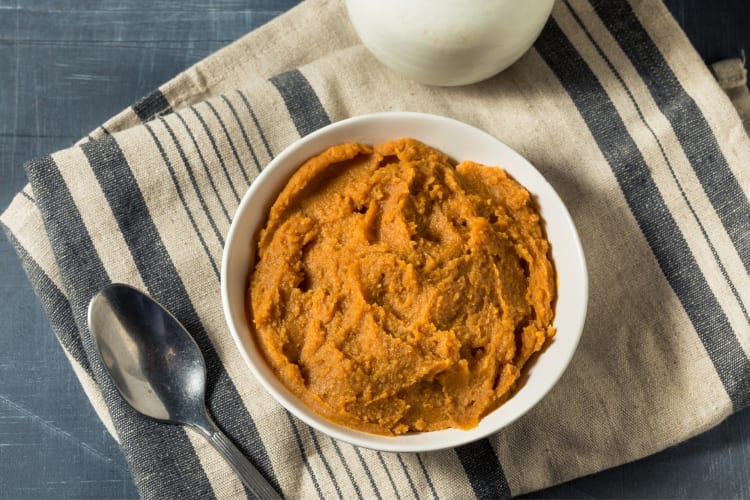
How Long Does Miso Paste Last?
As long as it doesn’t develop any mold growth, miso paste could theoretically last forever — or at least enough time for you to use it before it expires. If you store your miso paste at room temperature, you’ll probably want to consume it within three months for optimum freshness.
How long is miso paste good for in the fridge? Or how long is miso paste good for in the freezer? Miso pastes can vary widely, but in general, most will hold their quality for up to a year after opening when stored in the fridge or freezer. In the freezer, the miso paste could last much longer, even four to five years, although the texture may change significantly.
How To Use Miso Paste
Miso paste is very frequently used in soups, stews and broths. However, it has other applications as well. Some of the foods that can use miso paste include ramen broth, miso soup, vegetable stews, marinades and pan-fry sauces.
While these are some of the commonly suggested recipes, there’s really no wrong way to enjoy miso paste. From Japanese eggplant to miso glazed salmon, there’s a miso dish for everyone to enjoy. You can even mix the versatile ingredient into dressings, make it into a butter spread or a delicious vegetable dip.

How To Make Miso Soup From Paste
If you’re new to cooking with miso, learning how to make miso soup with miso paste is the easiest place to start. Miso soup is a traditional Japanese dish that uses miso paste, dashi broth and sometimes other ingredients like tofu, mushrooms, nori seaweed or sliced green onions.
To make miso soup, heat about four cups of dashi broth (either prepared or homemade) in a saucepan until it reaches a low simmer. In a separate small bowl, add three to four tablespoons of miso and whisk together with a few tablespoons of hot water until a smooth, pourable liquid is formed. You can use nearly any type of miso paste for miso soup, but white and yellow miso is the most common. Using a darker miso will bring a deeper, more savory flavor.
Next, add greens or tofu to the dashi broth and allow them to simmer for a few minutes. Remove the dashi from heat, then pour in your diluted miso paste and whisk together to get a clear, nutritious soup. This soup is best enjoyed fresh and hot but can be stored in the refrigerator for up to three days.
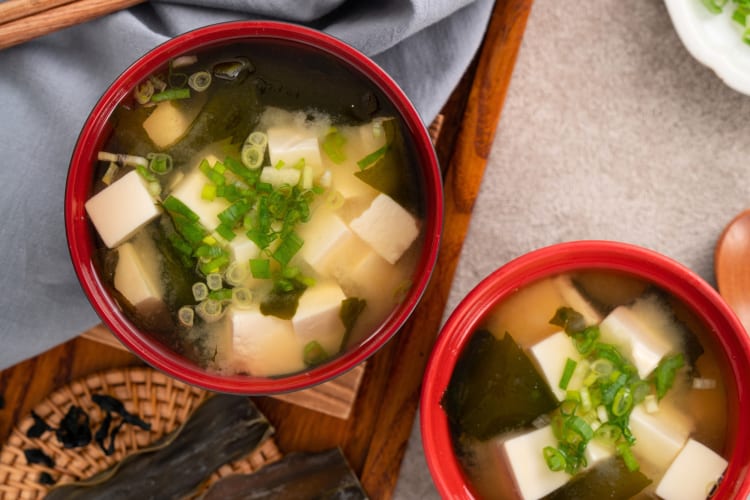
How to Make Miso Paste
Making miso paste at home is possible, but it requires a lot of patience. That’s because it generally takes about two days to complete the recipe, not including several months of fermentation necessary to bring on that savory, funky goodness. Because of its delicate process, one of the best ways to learn how to make miso paste is to join cooking classes near you or sign up for online cooking classes, but the basic miso paste recipe is as follows:
Miso Paste Ingredients:
-
1lb soybeans
-
1lb rice koji
-
1 cup of salt
-
½ cup of water
-
Miso starter (a few spoonfuls of miso from your last storebought or homemade batch)
Miso Paste Directions:
-
Soak and cook the soybeans.
-
Blend the cooked soybeans with a food processor until you achieve a smooth mash.
-
In a completely dry and sterilized container, add some of the miso starter to the bottom of the jar.
-
In a large bowl, thoroughly mix the remaining starter, soybean mash, salt, rice koji and a little salted cooking water. When you’ve achieved a smooth but firm paste, slowly add it into the jar, squishing down each spoonful to press out any air.
-
After more pressing, sealing and sterilizing, leave the miso container to ferment in a cool, dark area for at least three months, but up to six months or a year.
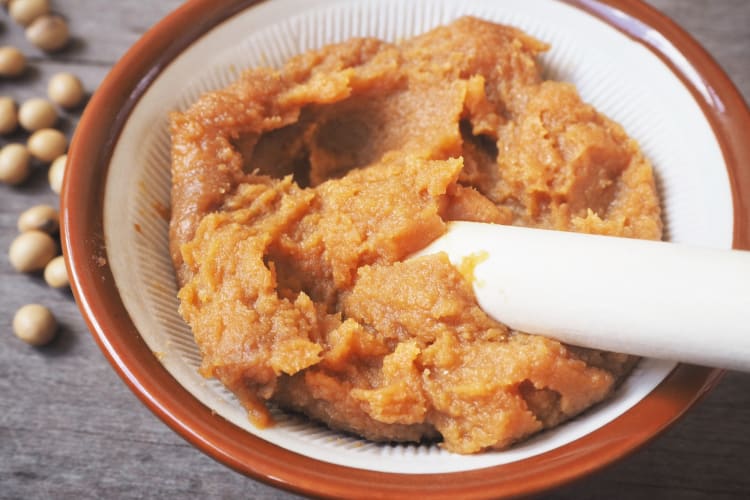
Is Miso Paste Healthy?
When consumed as part of a balanced diet, miso paste is extremely healthy! According to Healthline, miso paste is naturally rich in vital nutrients, including vitamin K, vitamin B, manganese, copper, zinc, calcium, magnesium and essential amino acids.
A 2022 review published in Food Science & Nutrition also showed that miso paste possesses cancer-fighting, gut-balancing and anti-inflammatory properties, among other benefits. In one study in the review, miso paste even helped irradiated rats eliminate radioactive particles from their body faster than other rats.
Like most foods, miso paste is healthy when consumed in moderation. In addition to being high in vitamins and minerals, miso paste also has a pretty high sodium content — just one ounce contains roughly 43% of the recommended daily intake. Most people can enjoy miso in moderation without worrying about this extra sodium, but eating several servings per day could be unhealthy, especially if you need to limit your salt intake for medical reasons.

Is Miso Paste Gluten-Free?
Most miso paste is naturally gluten-free, but those with gluten intolerance or celiac disease may want to be cautious. Traditional rice koji is gluten-free, but koji can also be grown on barley or wheat, which contain gluten. Mugi miso is made with wheat or barley koji instead of rice koji, so the final miso paste may have small amounts of gluten.
With that being said, the vast majority of miso pastes and miso soups are gluten-free. You may just want to exercise caution and avoid mugi miso if you’re on a strict gluten-free diet.
Is Miso Paste Vegan?
Yes, miso paste by nature is vegan and vegetarian. Traditional miso paste contains no animal-based ingredients, only soybeans, koji mold, salt and water, making it appropriate for a vegan or vegetarian diet.
However, if you’re purchasing or making miso soup, you may want to check the ingredients on your dashi broth. Most dashi broths contain bonito flakes, which come from bonito fish and are therefore not vegan-friendly. To make vegan miso soup, you may want to use a vegetable or mushroom broth instead of traditional dashi.
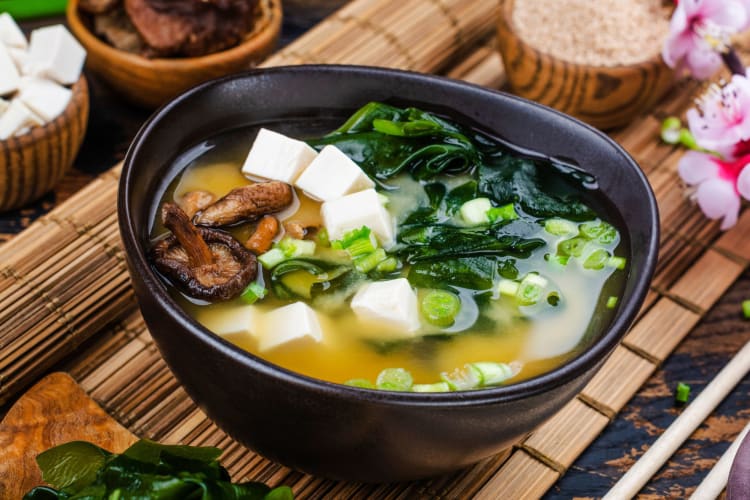
Where To Buy Miso Paste
Miso paste is a culinary staple of Japanese cuisine, so one of the best places to buy miso is at your local Asian food market. While you may be able to find miso paste at a standard grocery store, an Asian food market will likely have a broader selection. Miso paste usually comes in a tub, jar or squeezable tube and is located near the soy sauce, dashi, wasabi and other Japanese condiments. Like most foods these days, you can also easily find miso paste online.
A key indicator of high-quality miso will be a short list of ingredients. Good miso will contain soybeans, salt, koji grain and water, with very few other additives, if any. If you spot a laundry list of ingredients on your miso paste, it is probably not going to be high-quality and may be more prone to spoilage after opening.
If you really want to become a miso connoisseur, a visit to Japan may be the best way to discover miso paste! In Japan, you can even find entire shops dedicated to selling different varieties of miso, with shopkeepers who are well-versed in this traditional fermented food.

Miso paste is a staple ingredient for any culinary world traveler. Whether you purchase your miso online, decide to make your own or journey to Japan to find the perfect flavor, you’re in for a treat any time this savory, salty and umami ingredient hits your plate.
For even more ways to explore your favorite foods, check out other experiences happening on Cozymeal.



FOOD FOR THOUGHT?
Join the conversation.